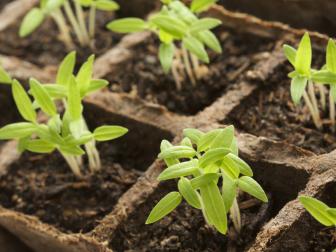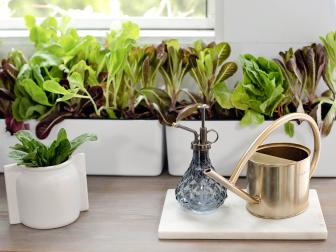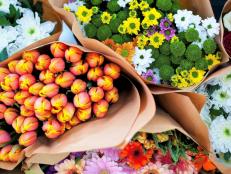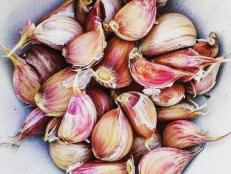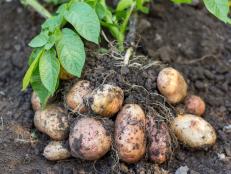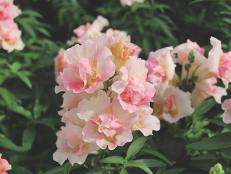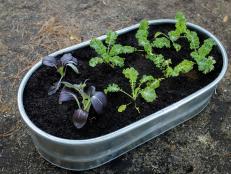Do Plant Seeds Go Bad?
Will last year’s flower and veggie seeds grow? Learn what you need to know about seed package dates, germination tests and seed storage.
If your seed storage spot overflows with seed packets, envelopes bulging with seed swap gleanings and bags of saved-but-unsorted seeds, take comfort. You’re definitely not alone in your seed storage mayhem. It’s a situation many gardeners face. Organizing your seed supply isn’t difficult, but it helps to understand the basics of seed package dates and seed viability.
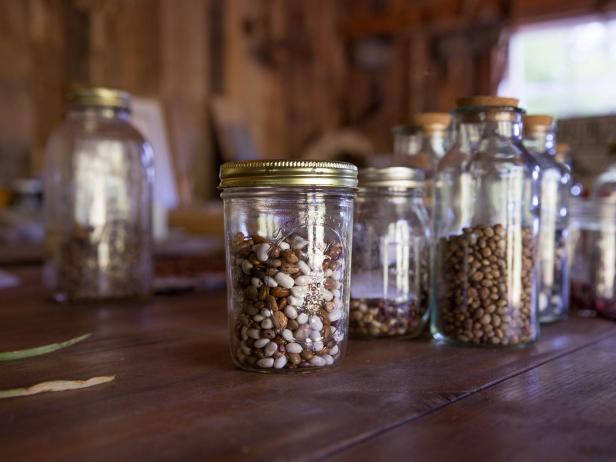
HGTV/Scripps Networks, LLC. All Rights Reserved.
Store seeds in tightly sealed containers like canning or baby food jars.
Unlike packaged food, seeds don’t have expiration dates. That date printed on a seed packet simply shows how old the seed is. The Federal Seed Act requires that seed packets have a “Packed for” year. That date reveals how long ago those seeds were certified to meet the required germination standards in order to be sold.
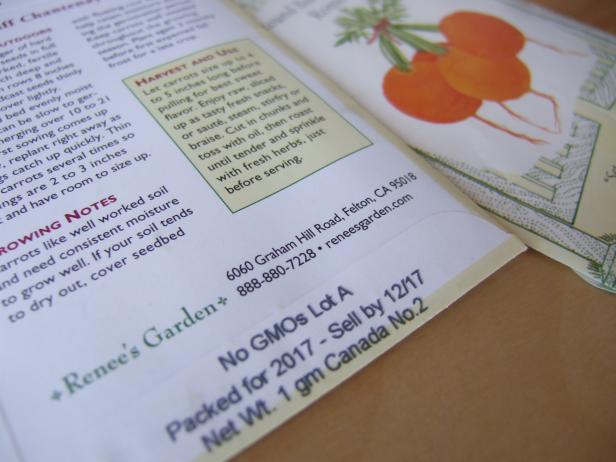
Julie Martens Forney
Most seeds remain viable for a few years after the "packed for" date on the packet.
Most seeds remain useful for several years beyond the “packed for” year. But it’s also true that as seeds age, they become less viable — less able to germinate. Several factors influence seed longevity, including seed age, type of plant and storage conditions.
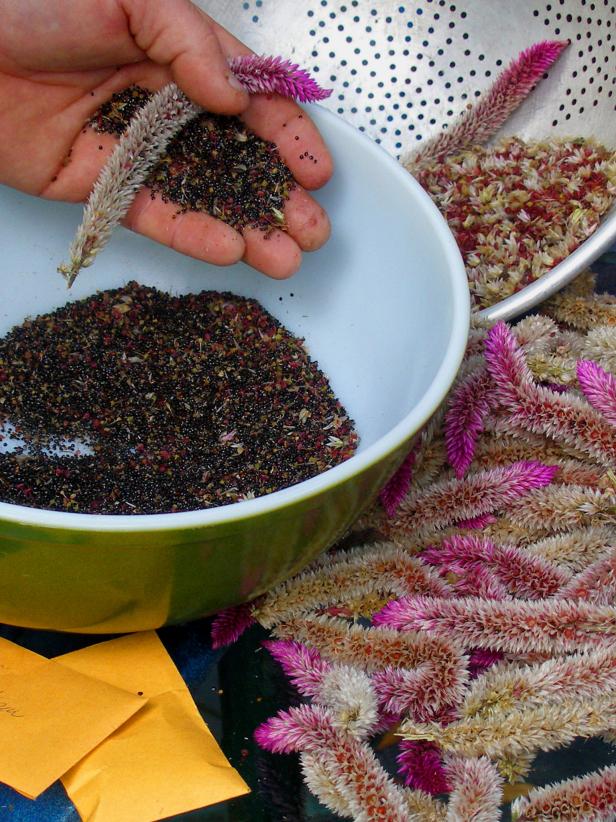
Seeds you collect yourself should be cleaned and dried thoroughly before storing in a cool, dry place.
Seed Age
Nearly all seeds remain viable (able to germinate) for at least a year, and a vast majority retain the ability to germinate for at least two years. Once the two-year mark passes, though, many seed germination rates start to decline. What this means is that instead of getting a 100% germination rate from the seeds, maybe only 75% or 65% will sprout.
Some Plant Seeds Last Longer Than Others
Different plant seeds remain viable for different amounts of time. Some plants have a shorter seed life, boasting the best germination for only a year. Examples include onion, leek, parsley, delphinium and aster. A pelleted seed has a shorter shelf life, too, and germinates best within a year.
Other plant seeds offer a longer viability window of five years or more. This group includes cucumber, lemon balm, nasturtium and zinnia.
Here are some average seed life spans for a few common vegetables, herbs and flowers.
Vegetable Seed Shelf Life
Flower and Herb Seed Shelf Life
The general rule of thumb for flower seeds is a lifespan of 1-3 years for annuals and 2-4 years for perennials.
- Basil – 5 years
- Borage – 5 years
- Celosia – 4 years
- Chives – 1-2 years
- Cilantro – 5 years
- Coneflower – 1 year
- Cosmos – 3 years
- Dill – 3-5 years
- Fennel – 3-5 years
- Hollyhock – 3-5 years
- Larkspur – 1 year
- Marigold – 3 years
- Oregano – 5 years
- Petunia – 3 years
- Scabiosa – 3 years
- Sweet Alyssum – 4 years
- Sweet Pea – 3 years
- Sunflower – 3 years
- Thyme – 3 years
- Yarrow – 3 years
Ideal Seed Storage
Seed shelf life tables provide a guideline for how long you can expect seed germination to remain strong. Ultimately, the actual lifespan you get from seeds depends most on how you store them. Ideal storage conditions result in the longest shelf life and can extend a seed’s estimated lifespan by many years.
With seed storage, the most important factor is temperature. Protecting seeds from temperature fluctuations is key. Ideal seed storage conditions are 40° F or less with less than 10% humidity, no air and no light. This environment isn’t easy to achieve in the average home, but there are ways to approach these conditions with your seed storage.

When storing seeds, slip envelopes into a tightly sealed container to prolong shelf life.
Best Seed Storage Practices
- Paper envelopes or packets allow seeds to experience more changes in their environment. Slip seed packets into a sealable plastic bag or other tightly sealed container.
- It’s OK to vacuum seal seeds and remove oxygen from the storage container.
- To keep insects or mice from feasting on seeds, place them into a mason or baby food jar or other tightly sealed container.
- Reduce moisture by adding silica packets or rice to your seed storage containers.
- The best place to store seeds is in a refrigerator or freezer. Before planting, let the seed storage container warm to room temperature before opening.
- During planting season, don’t let seed packets sit in a hot garage, shed or car. Temperatures of 108° F start to kill seeds; sterilization occurs at 140° F.
- Make sure the seeds are dry before storing them. This is especially important with seeds you saved yourself. When you apply pressure, properly dried seeds should shatter or snap cleanly in half. If seeds bend or smash, they’re not dry enough for storage.
DIY Germination Test
To guesstimate the viability of stored seed, use a simple germination test. Wet a paper towel or coffee filter. Add some seeds to one half of the paper towel. Fold the other half over to cover the seeds, and slide the whole thing into a plastic zipper bag. Label the sealed bag with the seed type and date. Place the bag in a warm spot. This could be on a root zone heating mat or simply in the warmest spot in your house.
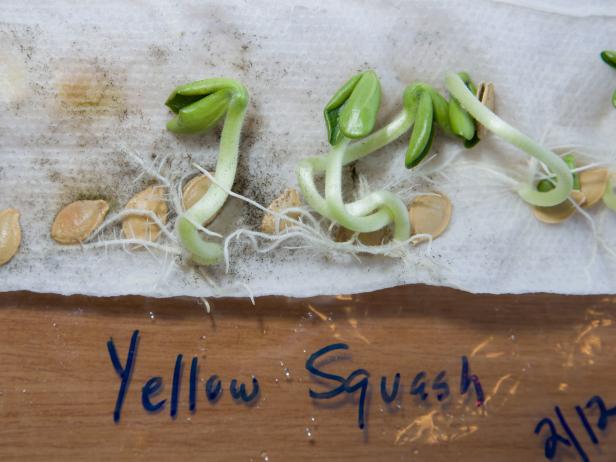
Robin J. Carlson for Chicago Botanic Garden
Germinate seeds on a damp paper towel to test seed viability.
Check the bag after a couple of days. Gingerly open the paper towel and notice if any seeds have sprouted. If a seed produces a healthy-looking shoot and root, that counts as a viable seed. Remove sprouted seeds (dispose of them or plant them), re-cover the remaining seeds, and dampen the paper towel with a fine mist sprayer before resealing the bag. The paper towel should remain damp, but not dripping wet.
Continue to count the sprouted seeds until no more have sprouted for a few days. Do the math to determine the percent germination for that batch of seeds. If seven out of 10 seeds sprouted, that’s a 70% germination rate. You can plant these seeds — just sow a few extra to account for the reduced germination rate. When the germination rate hits 50% or less, it’s time to buy new seeds.
Do not rely on a seed flotation test. The only seeds it’s accurate for are ones that have been studied in scientific research. In those instances, you need to duplicate both the seed type and the method used to get accurate results.
The Best Veggies and Herbs to Grow Indoors
A robust vegetable garden can be grown indoors all year long. Find out what edibles thrive indoors and get tips on planting, as well as finding the right space and lighting.








